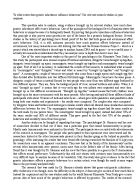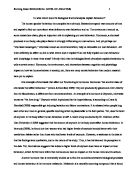Asch told the participants that they were taking part in an experiment in the study of the perception of line length. In the first experiment a male student was sat with six others in the second to last position, only the person in the fifth position was a participant whereas the others were confederates. Each person was asked in turn to judge the length of the line by comparing it to three others. They were told to give their answer out loud. The task was very simple and this is why Asch assumed that conformity would be low.
At first the confederates gave the right answers, then the first confederate gave the incorrect answer and the rest of the confederates followed suit. Over 70% of participants conformed at least once when the previous four peers gave the incorrect answer, even though it is clearly obvious that the answer is wrong.
All the participants in Asch’s experiment were male, in the same age range, and from university. From this alone it could be suggested that the experiment doesn’t allow us to make predictions on an individual’s behaviour, because the sample of participants was so narrow. The experiment also lacked ecological validity. It was so unlikely to happen in everyday life, that again, it’s impossible to predict an individual’s behaviour from it.
In 1980 Perrin and Spencer carried out the same experiment as Asch but with British Engineering, Mathematics and Chemistry students in a university. These results were a complete contrast to Asch’s with only one trail within 396 trials with a case of someone conforming. Perrin and Spencer also carried out the experiment again with young offenders as participants and probation officers as confederates. These results mimicked the original experiment. This could be because of the fear between the participants to the probation officers.
From looking at these variations of the same experiment, the idea of being able to predict a person’s behaviour is unlikely. As from three trials you can see different results dependant on a vast range of factors.
Before Asch, Sherif (1936) also did a study on conformity, but the major difference is that Sherif used an ambiguous situation, Sherif used the autokinetic effect.
Sherif asked participants to sit in a dark room and focus on a single light which would give the effect of flickering then disappearing. They were told to give repeated estimates of how far the light moved, as the trials progressed each participant had fairly consistent estimates, but, there was a big variation between each participant. Where one would guess one inch another would be guessing eight. A few days later the participants were put in groups of three and asked to give their estimates out loud. As they heard the other participants’ answers, the participants started too adjust their answers to fit their peers. Eventually, all the participants’ answers were virtually identical.
This experiment is a demonstration of informational conformity. The participants genuinely believed that their peers were correct, because the experiment was so ambiguous it is very hard to determine whether this experiment could actually predict people’s future behaviour. Sherif also had similar flaws in his experiment too Asch’s. Sherif only used men. This could raise the question that if women had been used as well would there be less or more evidence of conformity?
In conclusion, research into conformity does not allow us to make a prediction of a person’s future behaviour. A major flaw in previous experiments is that they lack ecological validity. How can an experiment of judging line length or judging the movement of a light help us predict a person’s future behaviour? The complete lack of ecological validity makes predicting a person’s behaviour from it impossible. Also, in previous experiments, the sample of participants has always been very narrow. The majority of previous experiments have been done on male university students; this again, backs up the idea that you can’t predict a person’s future behaviour. From just two experiments you can see that predicting a person’s future behaviour from previous conformity research is an impossible thing to do.








